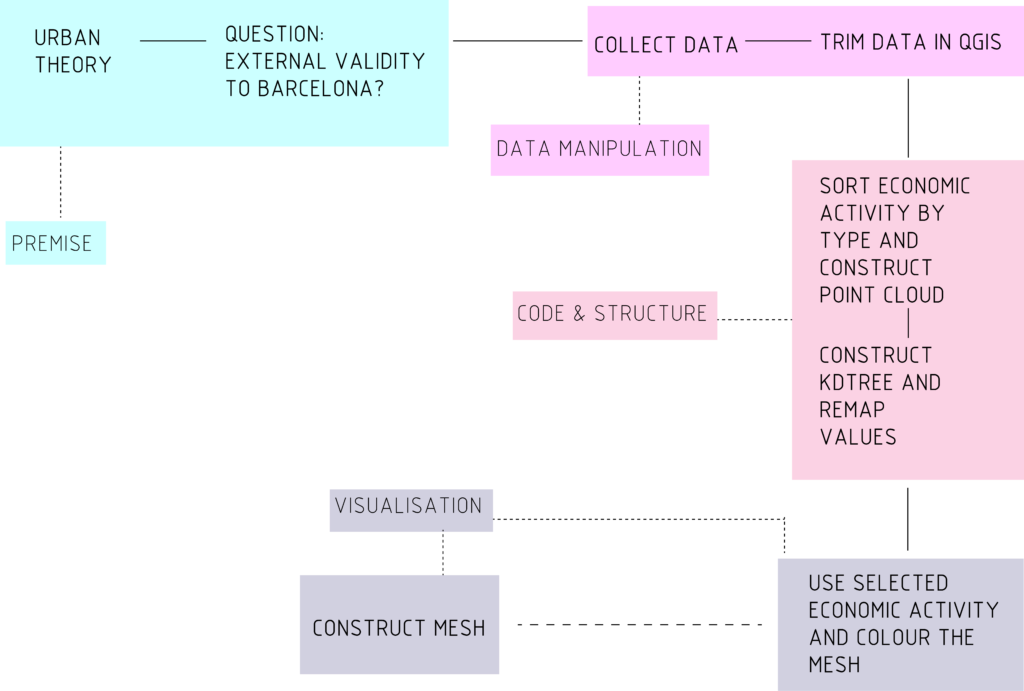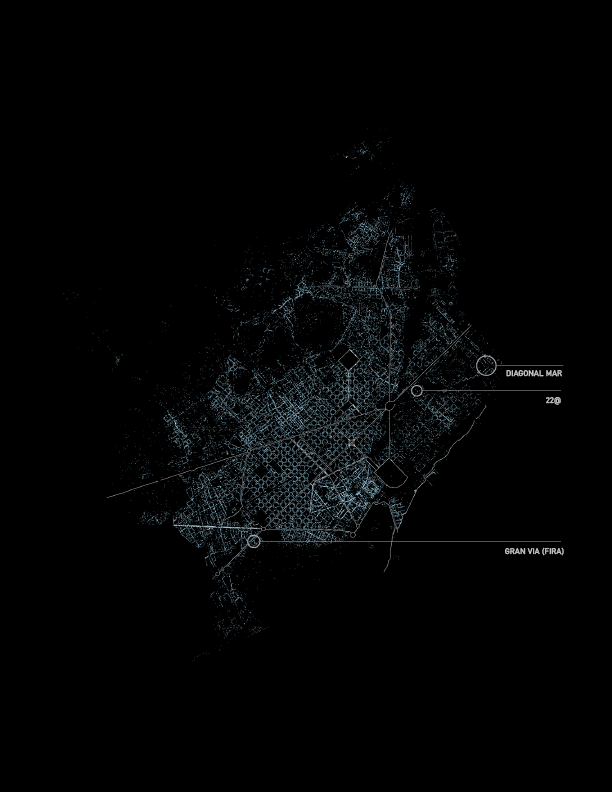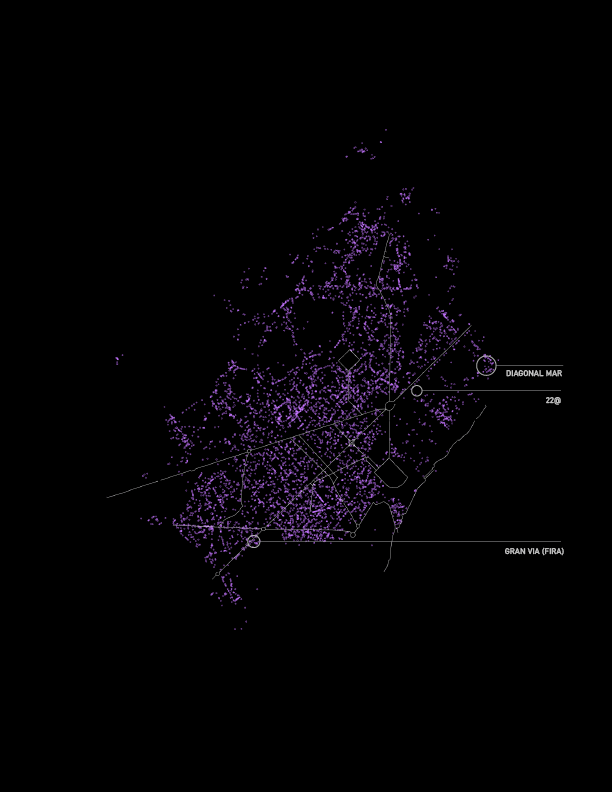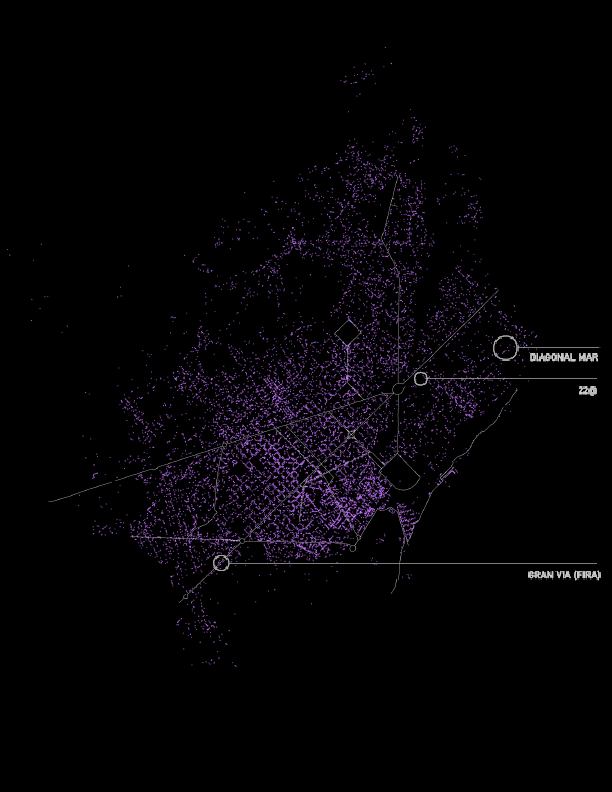In urban economics, much of the literature is based on a theory regarding a cities’ Central Business District (CBD), where this theory can be used to answer questions related to economic activity, productivity, employment, labour trends, among others.
Barcelona, along with several other European cities, is different in this spatial aspect because the city’s CBD is not located in the city centre, which is primarily touristic. Using a comprehensive dataset of economic activity in Barcelona, it is interesting to analyse the different types of economic activity in different areas of the city. Thus, the municipality of Barcelona is chosen for this project.
The primary data source used is about location and type of economic activity in Barcelona, from OpenDataBCN. First, the CSV file was trimmed in QGIS to only use the necessary columns – the geospatial data, the binary economic activity indicator, and the code indicating type of business.
The next step was to import the dataset as a shapefile into Grasshopper, and construct the code necessary to filter the data by type of economic activity. Concurrently, a basic mesh was constructed in Rhino and imported into Grasshopper for another visualisation option of the data.

PSUEDOCODE

TOTAL ECONOMIC ACITIVTY IN BARCELONA
First, a map of all the economic activity was generated. Then, the data was split into the fifteen categories on type of economic activity At first it is noticed that depending on the type, the cluster of activity varied across the city. Thus, for further insight, the data was clustered into two sub-sections, ‘tourism’ and ‘services’, the latter consisting of types of economic activity typically business or local service related. Due to the tourism industry heavily driving Barcelona’s economy, by segregating these sectors it is possible to obtain some insight of the spatial economic structure in regards to the CBD.

Activity by sector
The ‘tourism’ map shows high concentration of activity in the old city centre as expected. The ‘services’ map however shows sparse even activity throughout the entire city, not concentrated in the three CBD’s. The most plausible reason for this is the dataset only consisting of ground floor economic activity; thus, activity in high rise buildings could not be counted, leading to high bias in the dataset.

‘Tourism’ sectors

‘Services’ sectors
Nonetheless this poses a different lens to see the economic activity of Barcelona, where segregation by sector proves to be crucial to understand the economic characteristics of the city.
Central Business District Structure in Barcelona is a project of IAAC, Institute for Advanced Architecture of Catalonia developed at Master in City & Technology in 2021/22 by:
Student: Julia McGee
Faculty: Eugenio Bettucchi and Iacopo Neri